This morning, during breakfast while chatting with our innkeeper and fellow residents, we learned that there is an annual festival here in Mabou called Celtic Colors, and that the Glendyer Inn is always booked up solid for that time, as there are not many rooms available in this area. I thought it would be something I would like to come to, so put it on The List. So often when we travel we haven’t the time to linger, to really spend the days we want to in a certain place, so I have this imaginary list with more than a few locales to return to. Mabou, the music and Glendyer Inn have a spot there.
(And P.S. This is the longest post of the Canadian set. We saw a lot today.)
Next to Glendyer Inn is a small millstream, for that’s what used to be around here: a mill. So there’s also a defunct railroad trestle, that another day would make a nice walk (but, oh!, the mosquitos!).
We turned UP the Inn road, instead of down towards Mabou. The innkeeper said that some of those who had stayed with her ended up buying property around here for summer homes. I can see why.
Red and white house sighting!
We did happen onto some spectacular yard art as we traveled, but this one, laid out in a pattern with all sorts of animals and strange treasures was memorable.
I guess the red house caught my eye because it stood out in the green fields and forests.
Wild irises on Highway 19, Cape Breton Island.
Our innkeeper had told us about Joe’s Scarecrow farm, and I immediately recognized it, not from this sign, but from the obvious combination of naive art and just plain weirdness. It is just south of Cheticamp by about 20 minutes, near Cap Le Moine, if you go looking for it. Dave said “Pass” and he spent his time taking photos of the local houses and flora and fauna until I could coax him to play along with this weird vision and pose by a scarecrow.
This is the welcome scarecrow: a figure made up of halloweeny mask, scavenged clothes, gloves, hats and other stuff. The rest of them stand in a semi-circle radiating out from this greeter, and also include a smaller circle of “children” scarecrows.
I loved how the tourist blended into the figures. These are the “children.”
As a Democrat, Dave posed with one of the scarier figures there: George W. Bush.
From the web:
In 1946, Joe Delaney planted a garden and placed scarecrows in it – to scare away the crows. Neighbors told Joe the garden was too close to salty sea water to grow vegetables while other neighbors suggested he grow scarecrows. He placed more scarecrows in his garden and tourists stopped to see the figures so he planted even more scarecrows. A few years back vandals destroyed all of the scarecrows except one and the local newspaper wrote a story from the lone scarecrow’s point of view. People from Cape Breton, Nova Scotia and even from around the world came to Joe’s support and donated clothing, materials and money to rebuild his scarecrow collection.
So, why the red, white and blue barn, with a yellow star? Is someone from the States, and broadcasting it loud and proud? No, we’ve just entered Acadian Country, and those are their colors.
The church at Cheticamp. Across the road was the local grocery store where we stopped for a snack (didn’t end up buying one), but there was a lovely scene of a yellow house across the water:
I know, you’re thinking, “Great shot. Not,” and I’d be inclined to agree with the idea that there isn’t much to photograph around here on a foggy gray day. So this shot (which I thought Dave did a fine job snapping) is typical of the lone house surrounded by either water or green fields or forests or some combination of all three. Even the village of Mabou, which we liked quite well, is tiny–a long street with two restaurants, a quilt shop, a government building, gas station and a church or two. It’s the smallness of civilization that I think represents Cape Breton Island–Man has not left a large mark on the terrain. I was also always aware that in winter, this might possibly be a tough place to acclimate to, given the winds and water and cold, and a video I found of crossing the Canso Causeway in a blizzard confirmed that for me.
This trip was a bit of a different journey for us, and we knew it wouldn’t have the easy showiness of say, the hilltowns of Italy, or Paris, France. It’s not “easy” touristing, with a picture around every corner and familiar landmark on the next block. The distances are lengthy, the food is mostly “eh,” the giftshops filled with medium junk from China mixed in with maple sugar, maple syrup, tartans and postcards. Where there are local crafts (like in the Acadian museum near the church) I found the prices to be more than I was willing to pay, for what would I do with a hand-hooked wool coaster for $12 ? (Although I must say the hand-hooked wool rugs for $800 were small, but beautiful.) We learned to dial down our expectations from European travel and enjoy the small pleasures we found–like a yellow house with a red roof across the water.
Our goal today was to drive the Cabot Trail, a road through the Cape Breton Highlands Nation Park of Canada, looping around the upper island with many views of the ocean.. The day is still a little foggy, not brilliant sun like we’d hoped. But in travel, you take what you can get. And we took in all the vistas, and enjoyed the scenery, except when we were behind what Dave referred to as a Winnebagah, which actually turned out not to be too often.
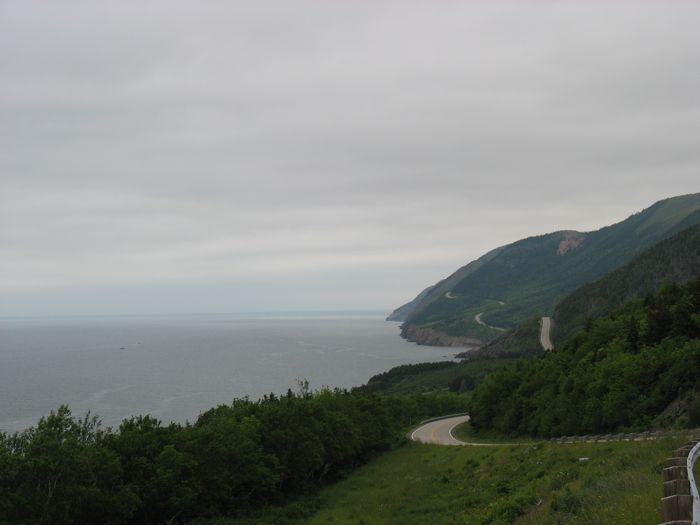
The beginning of the Cabot Trail, for us, was here, when we glimpse out from the Cape Breton Highlands down to the ocean. The Cape Breton Highlands National Park of Canada, reminded us of Big Sur, Maine, Zion, Yosemite, parts of Big Bear and Germany all in one. It was beautiful.
Notwithstanding the description of the trip in the above section, my main goal on this trip was to spend time with Dave, as we celebrate our 21 years of marriage this coming August. We talked often (the car, without radio or iPod hook-up) provides lots of opportunity for that, and I enjoyed our conversations.
Moose! She was with her calf, so we kept our distance.
Fishing Cove, glimpsed from a thousand feet above, was at the base of MacKensie Mountain. The sign at the lookout point said that it used to have a “thriving farming and fishing community, complete with a lobster cannery. Scottish settlers fished the Gulf waters for lobster and cod, trading with Cheticamp for supplies. By 1915, descendants of these pioneer families–the Frasers, Hinkleys, MacKinnons and McRaes–had left this wilderness and moved to surrounding communities.”
We could have taken the nine kilometer hike down to the water, but we didn’t.
This is an inland valley. We know this park would have been more dramatic in the sun, but I didn’t mind the misty softened edges, and the quiet that the fog brings. We learned to stop at pull-outs especially if there were other cars already stopped.
From a postcard, sold everywhere, that shows the road coming down MacKenzie Mountain (which I’m pretty sure is the mountain in the inland valley, above).
This is on the eastern side of the Cabot Trail, probably few minutes south of Nells Harbour. We see the water again.
We stopped here with two other Winnebagahs (Winnebagos) to take in the crashing surf on the red rocks. Dave noted that while the water on the western side of Cape Breton was placid, this eastern side was like the typical ocean, with lots of wave action. We chatted briefly with one tourist couple from Hamburg, Germany. They’d parked their camper up at Cape North the night before and in the morning awoke to the sounds of barking seals in the ocean below. Note to self: add this to The List.
Because my favorite thing is to get a photo with Dave, they politely snapped our photo. I couldn’t believe how many lobster traps there were in this surf. Apparently those who wish to place a trap have to register with the Powers That Be, and each fisherman has their own decorative buoy marking the trap–each different, each unique.
The sea mist has been trapped on the spiky green pine needles at Green Cove.
On the eastern side, there are a lot more crafts people with little shops. We lots of signs for quilts, sweaters, pottery and woodworking. We stopped at this woodworking shop and enjoyed the long thin slice of a log, showing the knots of the tree trunk. We also stopped at another place, where we bought a CD of Cape Breton Fiddle Music from the Lighthouse Fiddler. We popped that into the CD slot in our car and listened to the vibrant tunes and we drove towards our next stop: Baddeck.
We took a turn away from the Cabot Trail and headed toward St. Anne’s Bay in order to take a ferry across that harbour, shortening our drive. We were a little tired of being the car by this point. I looked back behind me as the ferry went quickly across the water and bid a good-bye to the highlands.
Anglers of St. Anne’s Bay
Into the car again, and within a half an hour had arrived at our Bed and Breakfast: Auld Farm Inn.
It is run by a couple from Scotland who two years ago (all together now) got tired of the rat race and decided to immigrate to Canada and run a bed and breakfast. This place was more like a small inn, as it had nine rooms, some in an addition to the back (where our room was). This really was an old farm at one point, with this huge barn dating from the turn of the century (according to him) at the back of the property. The owner was still cleaning out the hay from the previous owner.
We settled in, got the wireless code, checked emails (Dave had a storm brewing at work that he had to keep tabs on), then headed down to Baddeck. We stopped at the tourist office, who was just closing. The whole place seemed to be in a good mood because the next day was Canada Day, and they’d be closed. I was asked three times if I’d gotten my Canadian pins, and so I obliged, taking enough for the grandchildren, only realizing later that they wouldn’t really be interested.
So if you need some Canadian pins, let me know.
We walked Baddeck, a veritable city to Mabou’s town, as this had two stoplights and two gas stations, among other things. Baddeck is on the shore of the large inland lake called Bras D’Or, named by the early French settlers. It has limited tidal action and an abundance of inflow from local rivers, so the salinity is lower than the Atlantic ocean.
Old building, converted to a museum, and I loved the lone hanging stoplight. We noticed how many wires seem to cross our views this trip, as it seems they don’t bury their electrical lines as much as we in the States do. So these lines become part of the scenery, I guess you could say.
Dave and I took a break for a while, gazing at the harbour, sitting on a bench in the shade, for yes, the sun had finally arrived in our trip. We walked back along the main road, and this wall caught our eye–a leaf for every fallen soldier in Afghanistan since 2002, with the red leaves for “fellow Nova Scotians.” We attributed this show of patriotism to the upcoming Canada Day, but did reflect on how little we note the fallen soldiers in our own home town. You’d NEVER see this kind of a display at the local sandwich shop, for example. Does our reticence linger from the Bush year doctrine of not mentioning those who were killed, the photographs of the soldiers’ coffins forbidden? Or does it stem from the United States’ divided attitudes toward the war: we realize that we need to stand against terrorism, but just wish we didn’t have to fight two wars in order to do it. Whatever the reason, I found the Canadians’ attitude toward these wars to be somewhat of a mystery to me–acceptance, perhaps, of the role their neighbor to the south has always played in their lives? One man we met went out of his way to tell us that while he’d heard many negative things about Americans, all of the people he’d met from the States had been very nice. A curious comment, we thought. Travel makes me see things I don’t always want to, especially on this trip, where we speak the language and interact more with the residents, our fellow travelers and sight-seers.
We decide to eat here, forgoing the splashy tourist brochure ad for another place in town that serves Lobster Dinners (we don’t really want the mussels anyway–even if they are “all you can eat”).
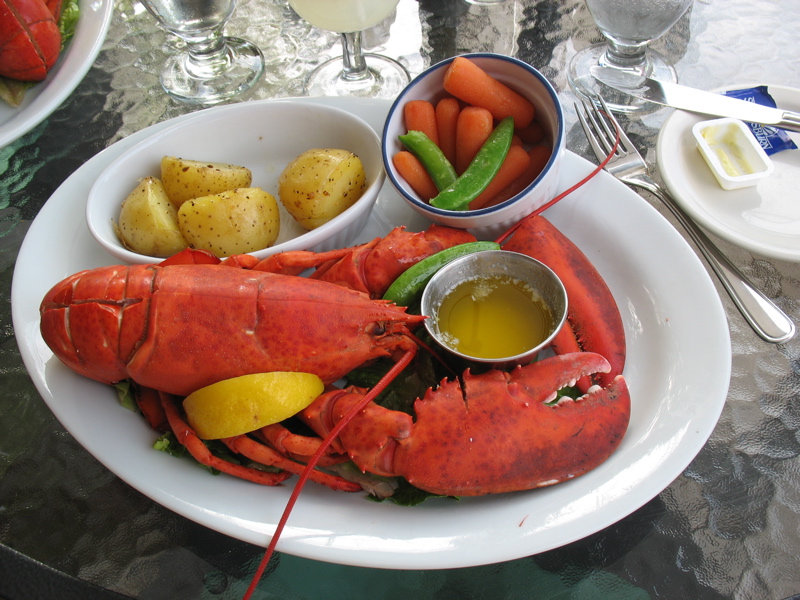 The meal consisted of lobster, homemade rolls, roasted potatoes, home-style lemonade. That lobster looks kind of territorial about the melted butter, doesn’t he? I’ll post a description of our dessert on another post a little later, a dessert which we shared. Because we were full. But, boy, was it good.
The meal consisted of lobster, homemade rolls, roasted potatoes, home-style lemonade. That lobster looks kind of territorial about the melted butter, doesn’t he? I’ll post a description of our dessert on another post a little later, a dessert which we shared. Because we were full. But, boy, was it good.
We ate on the patio, on this lovely evening.
After dinner we took a stroll around town. The waiter had told us about this large yacht belonging to some Famous Person (he’d heard rumors of whose it was); it had broken down and been there for more than a week. That sounds like the Big Event of the season for Baddeck. But I did see lots of bunting and notices for the parade down main street the next day at 1 p.m. so the broken Famous Person’s Yacht can’t be the only game in town this week.
We found Baddeck’s red and white house, complete with golden maple leaves painted on the shutters.
We found our car and headed home, taking a detour to see this golden-doored church, and another red and white house (below).
After this I promise no more red and white houses. These shutters carry the initial “M.”
We fought our way through the swarms of mosquitoes to our room, but I just had to step out again to catch this sunset. I then flailed my way back into the room, Dave laughing at my antics. Mosquitoes LOVE me.
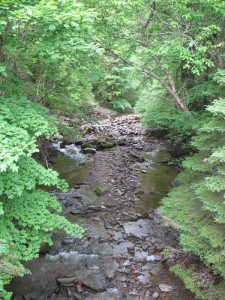
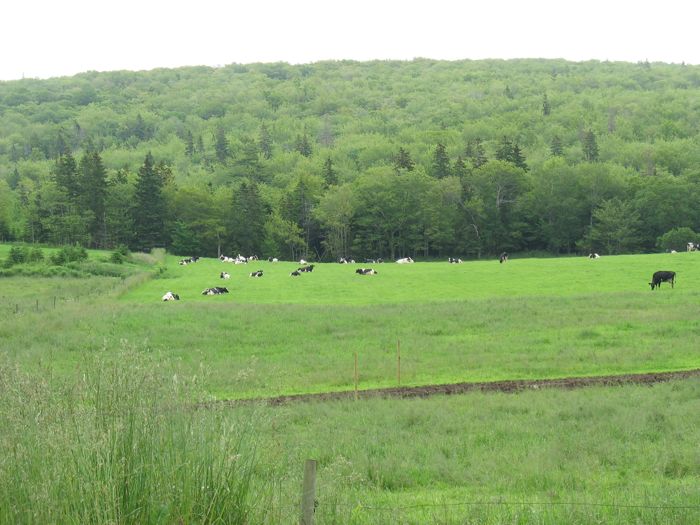

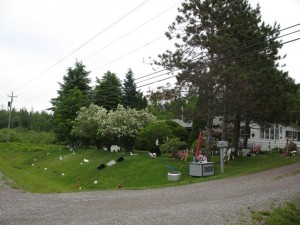
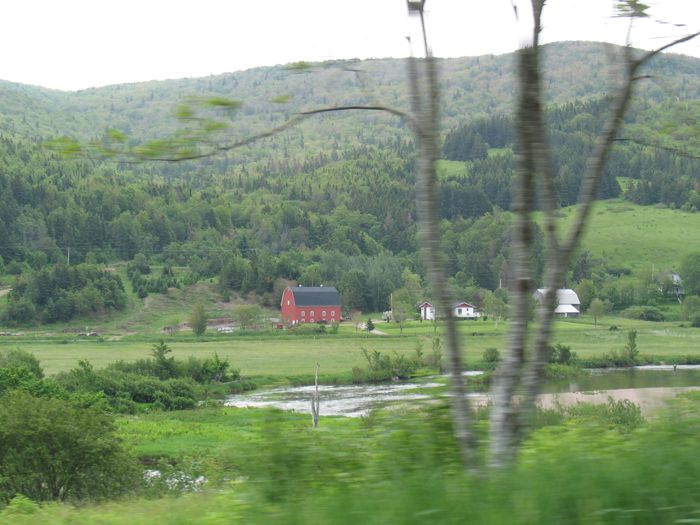
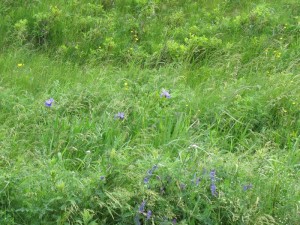
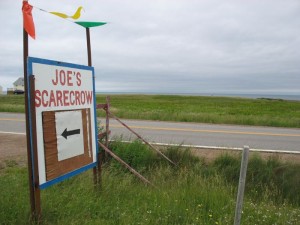
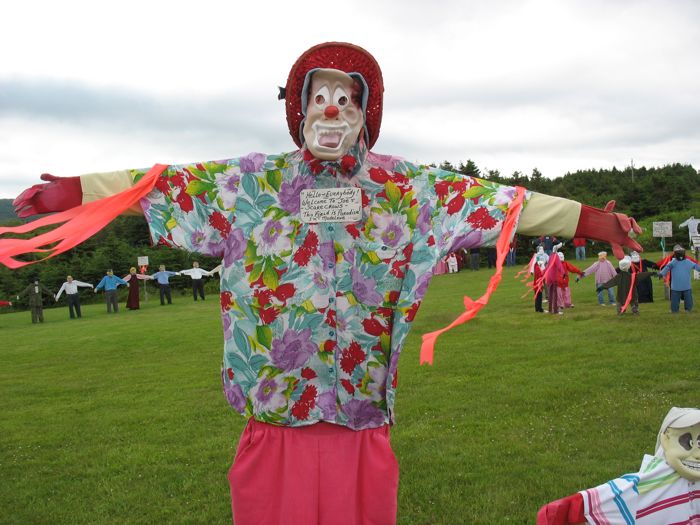
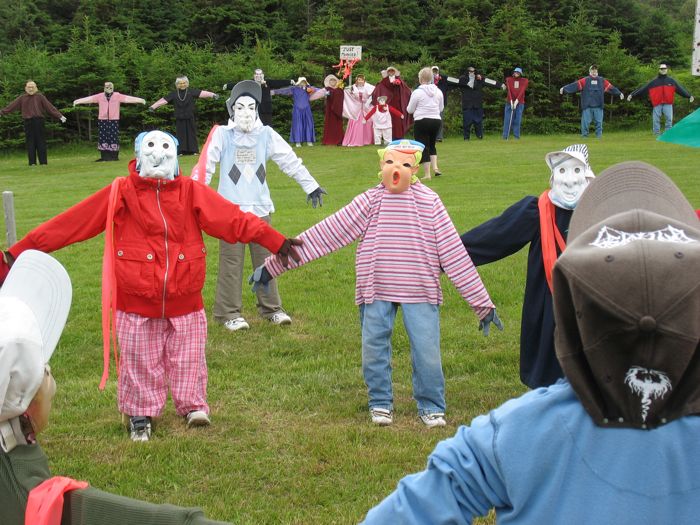
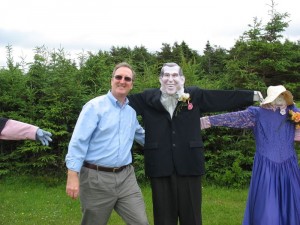
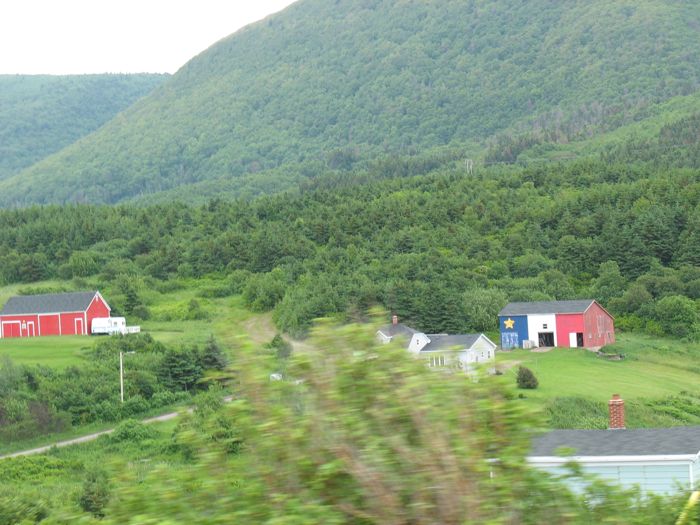
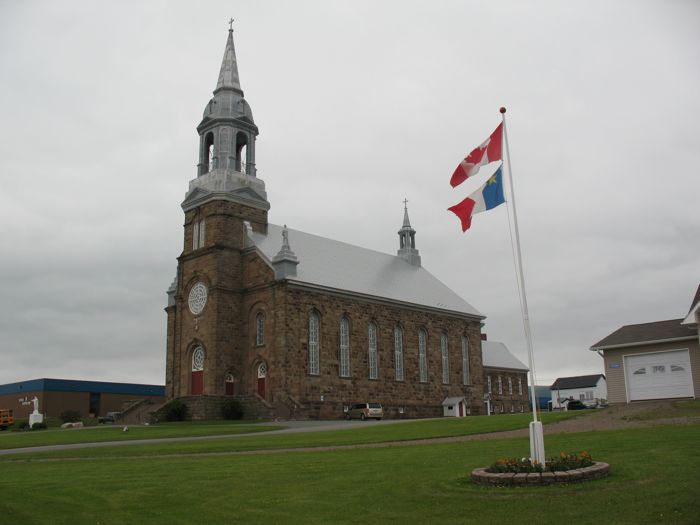
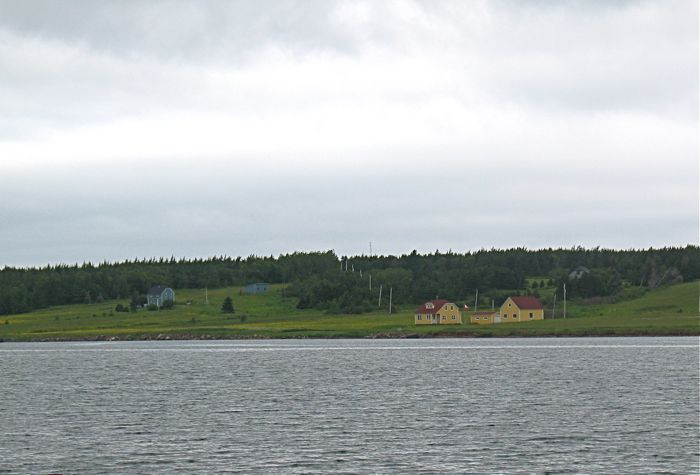
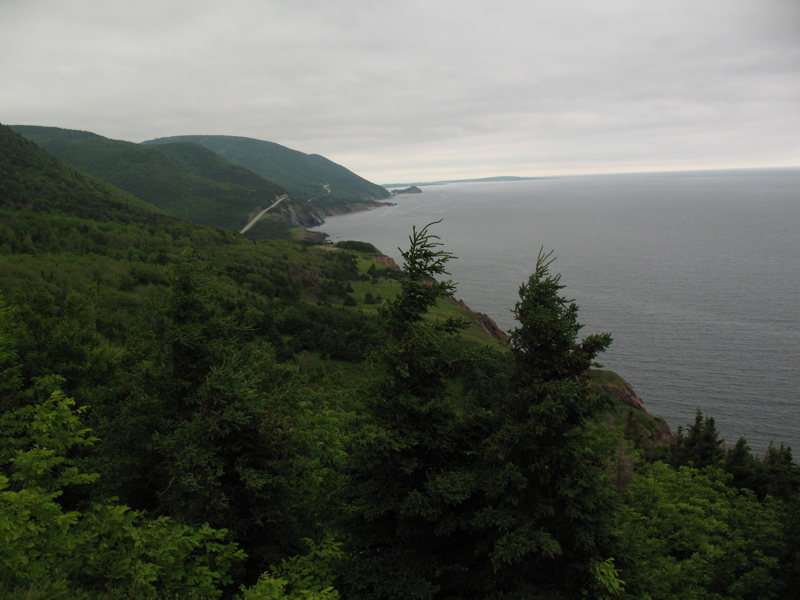
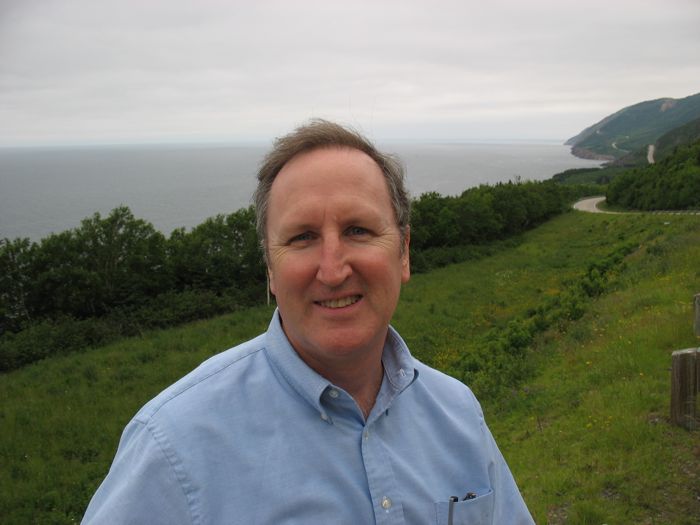
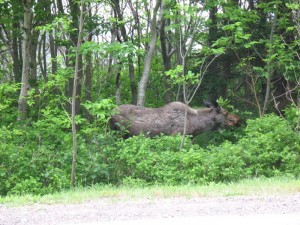

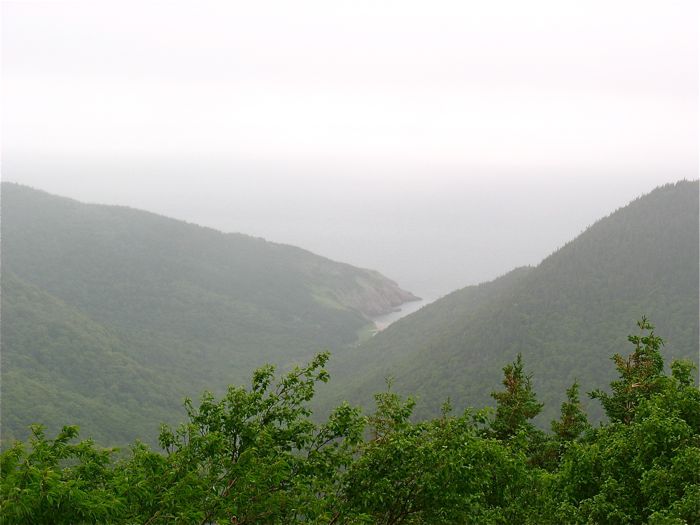
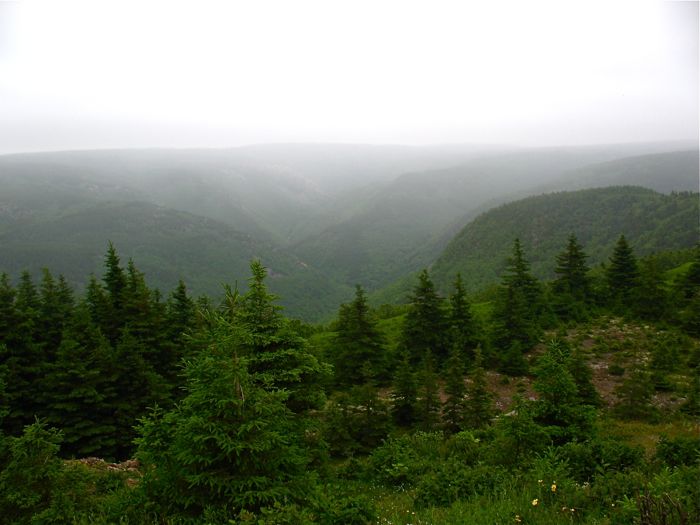
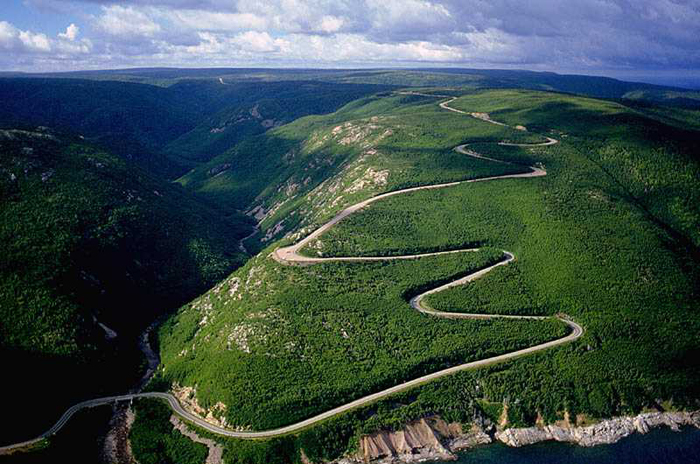
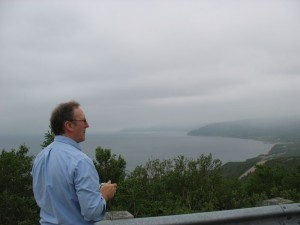

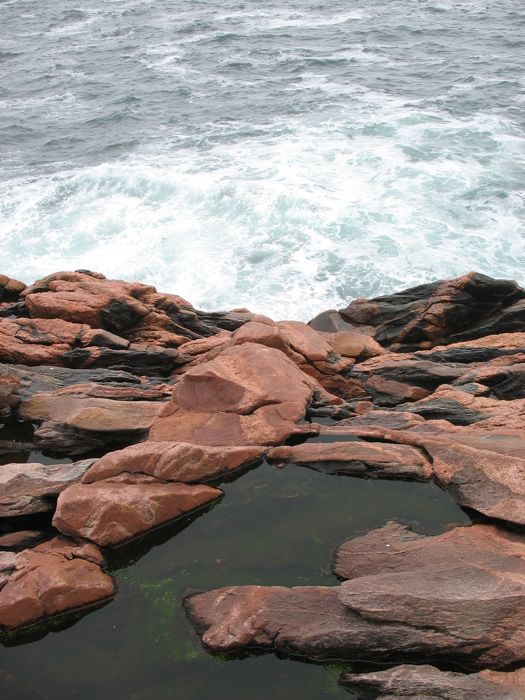
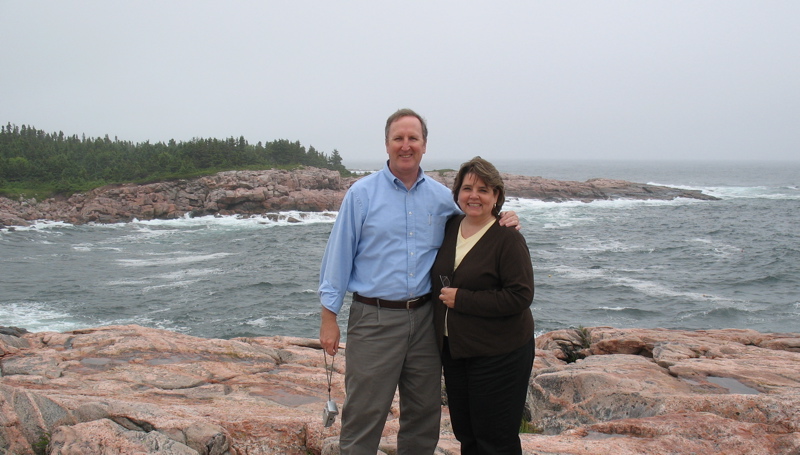

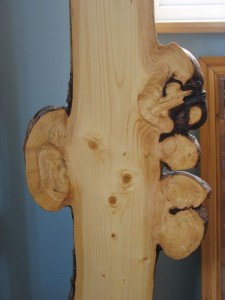
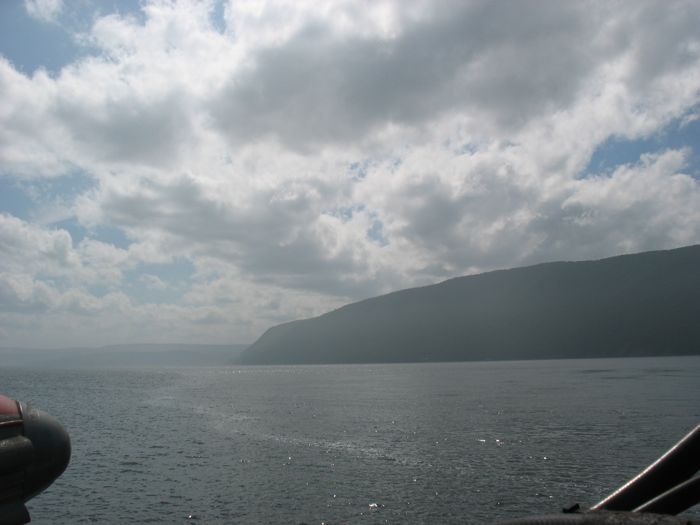
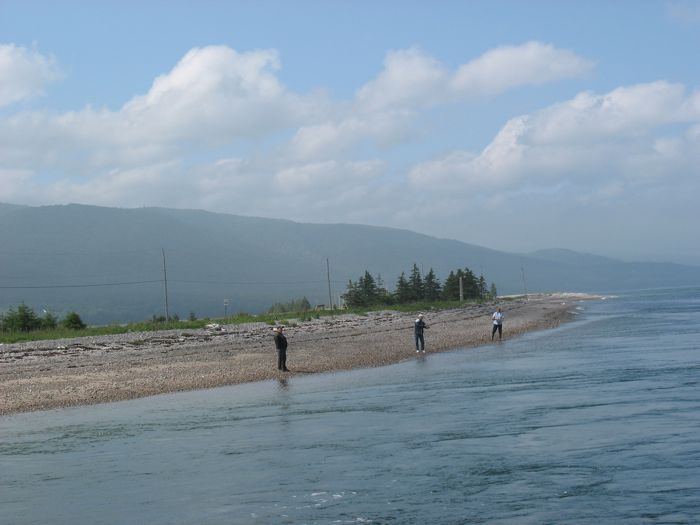
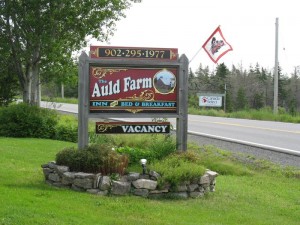
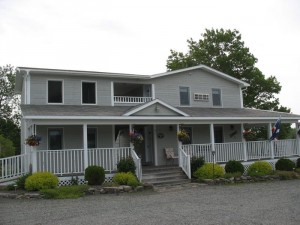
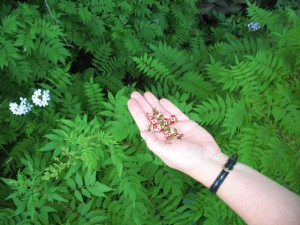
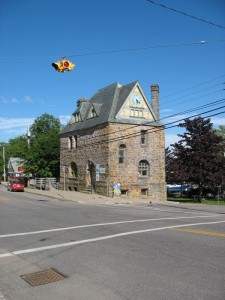

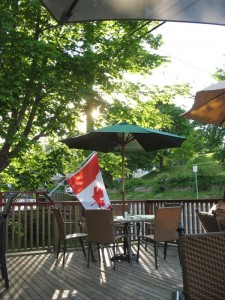
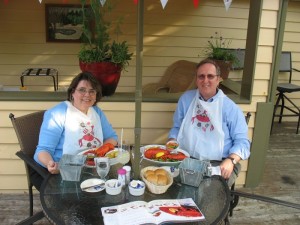
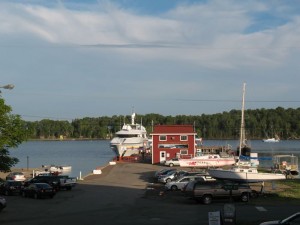
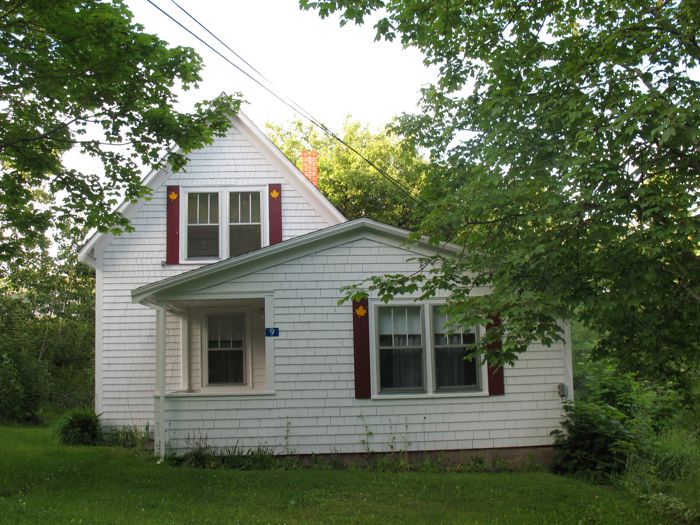
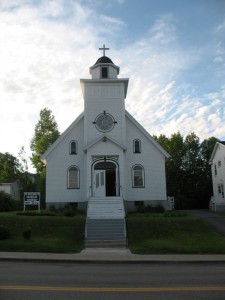
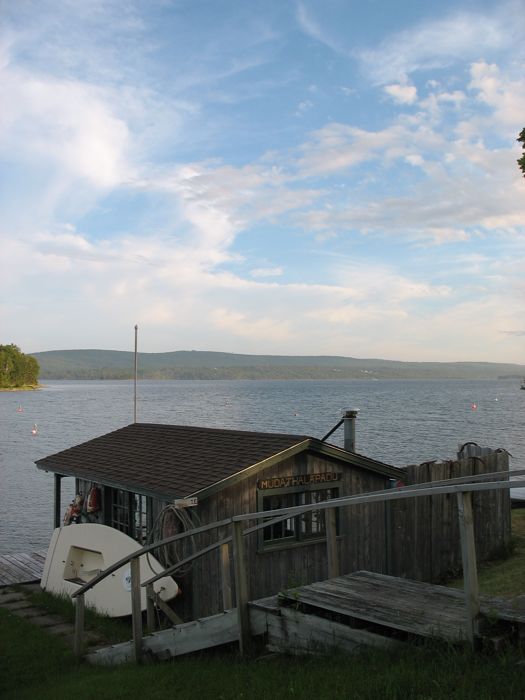
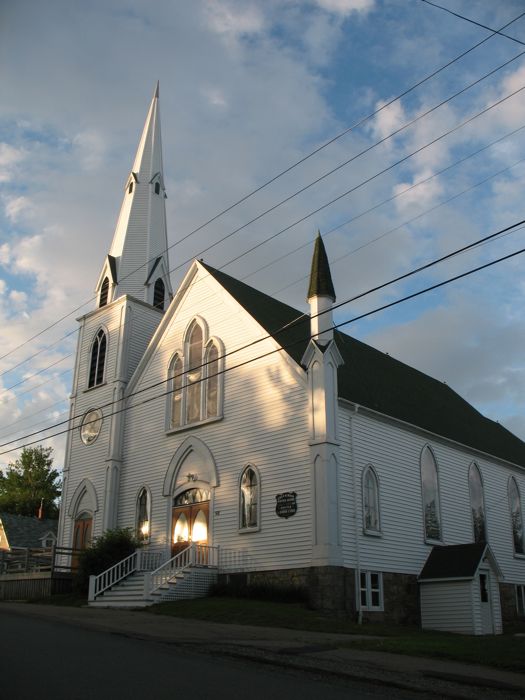
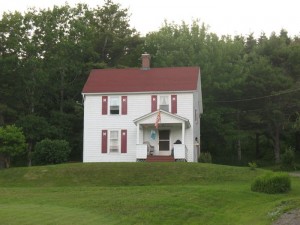

Love the picture of you and Dave–fine fodder for your future memoirs. The lobster looks delish. Dessert must have been spectacular if it could compete with this fellow.
AND I must add the Scarecrow Farm to my list of Places to See.